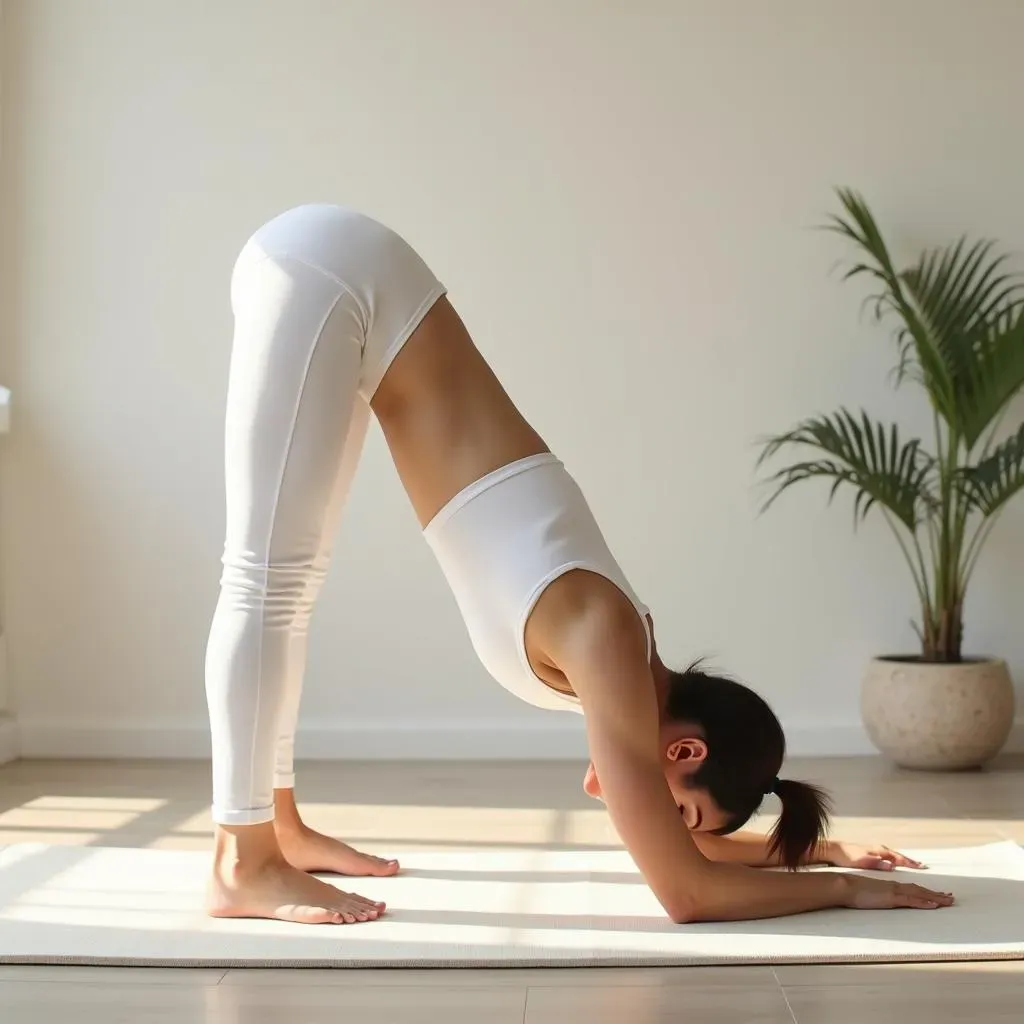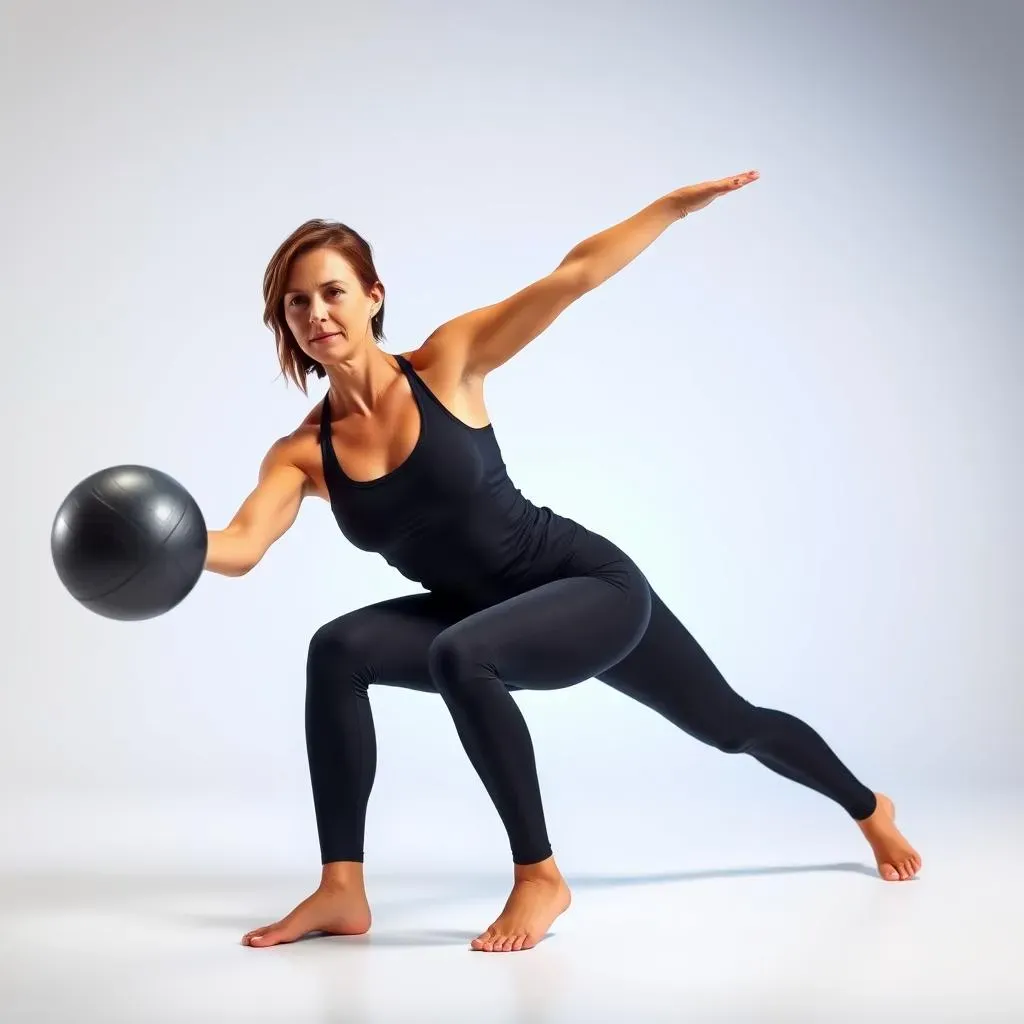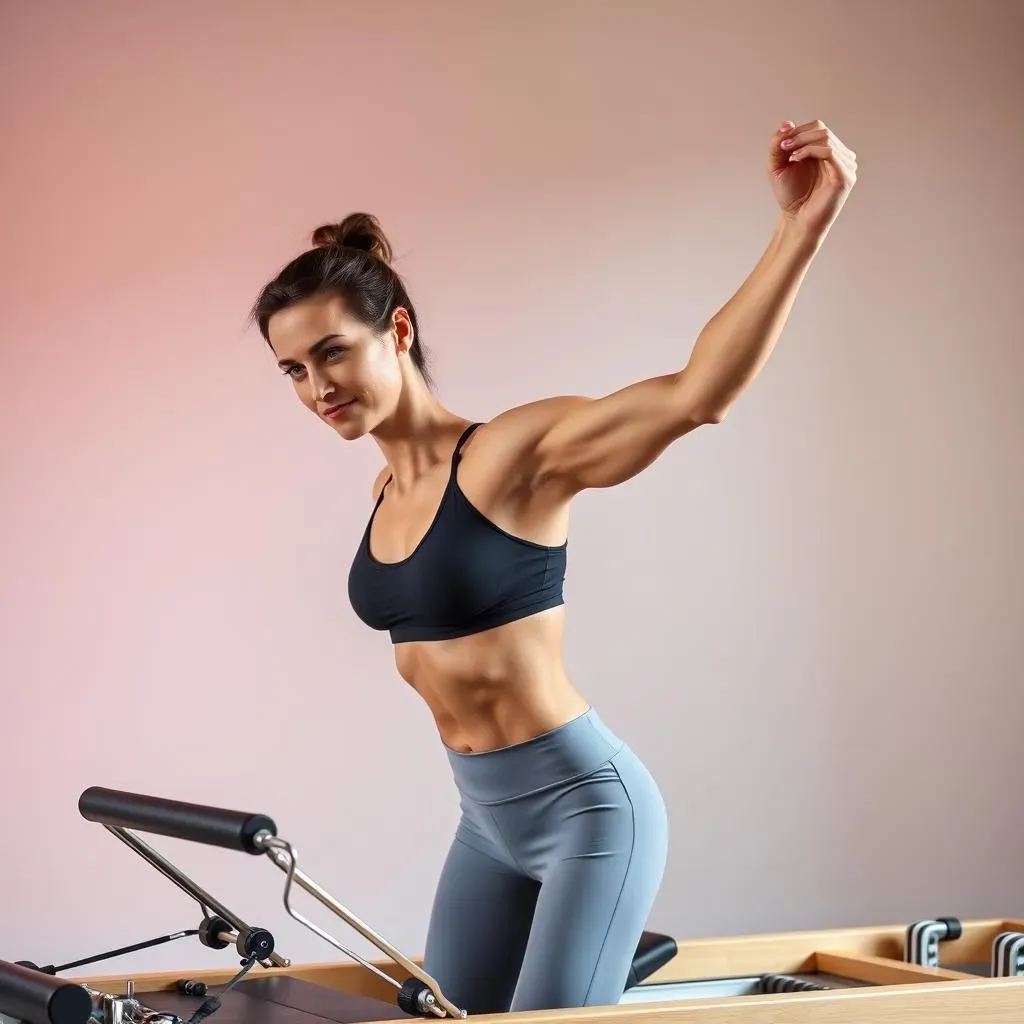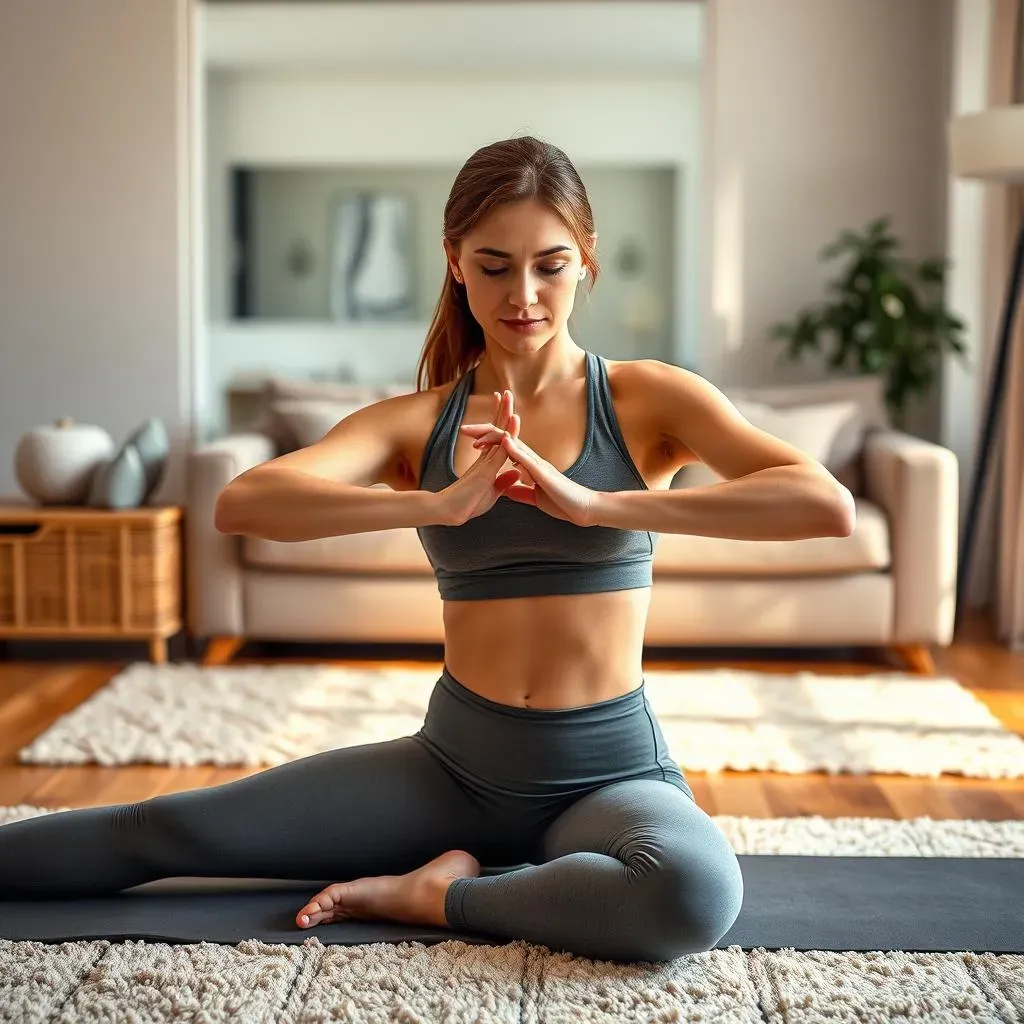Table of Contents
Ready to sculpt a stronger, more defined core without stepping foot in a gym? This guide dives into the world of at-home Pilates workouts specifically designed to target your core. We'll explore why a strong core is crucial for overall health and well-being, beyond just aesthetics. Whether you're a complete beginner or already familiar with Pilates, we've got you covered. We'll start with simple, equipment-free exercises perfect for building a solid foundation. Then, we'll progress to more challenging routines to help you increase intensity and see real results. Finally, we'll explore advanced Pilates techniques to push your limits and achieve peak core strength. This comprehensive guide provides a clear path to a stronger, more resilient you, all from the comfort of your own home. Get ready to experience the transformative power of a "pilates workout at home for core"! Let's get started!
Why a Strong Core Matters: More Than Just Abs

Why a Strong Core Matters: More Than Just Abs
Think of your core as the body's powerhouse—it's not just about six-pack abs! A strong core is the foundation for almost every movement you make, from walking and running to lifting groceries and playing with your kids. It’s the unsung hero supporting your spine, improving your posture, and boosting your balance. A weak core can lead to back pain, poor posture, and even injuries. Strengthening your core improves stability, reducing the risk of injury during other exercises. It's like building a sturdy house—you need a strong foundation before you can add the rest! Want to tone up? Check out our guide on Pilates for toning.
Benefit | Explanation |
|---|---|
Improved Posture | A strong core helps maintain proper spinal alignment. |
Reduced Back Pain | Strong core muscles support the spine and reduce strain. |
Enhanced Balance | Core strength is essential for maintaining stability. |
Beyond the physical benefits, a strong core can even improve your breathing and athletic performance! Imagine trying to throw a baseball with a wobbly base—not very effective, right? The same applies to your body. A solid core acts as a stable platform for powerful movements. For seniors looking to improve core strength and balance, we recommend checking out our Pilates for seniors guide. This is crucial for everyday activities and prevents falls.
- Improved athletic performance
- Better balance and coordination
- Increased stability during daily tasks
So, while those visible abs are a nice bonus, the real value of a strong core lies in its ability to improve your overall health, fitness, and quality of life. It's about functional strength—the kind that helps you move freely and confidently throughout your day. Ready to build that powerful core? Let's move on to some beginner-friendly exercises!
BeginnerFriendly Pilates for Core Strength: No Equipment Needed

BeginnerFriendly Pilates for Core Strength: No Equipment Needed
The Hundred: Your Core's First Friend
Let's start with a Pilates classic: The Hundred. Lie on your back, knees bent, feet flat on the floor. Lift your head and shoulders slightly off the mat, engaging your core. Pump your arms up and down, small controlled movements, while breathing deeply. It's all about controlled movement and breathwork. Start with 10 pumps, then build up to 100. It’s deceptively challenging! This exercise builds endurance and strengthens your entire core. For a more comprehensive beginner's guide, check out our Pilates for beginners article.
- Focus on controlled breathing.
- Keep your core engaged throughout.
- Start slowly and gradually increase repetitions.
Don't worry about speed; focus on proper form. Feeling the burn in your abs is a good sign! Remember, consistency is key. Even a few minutes each day will make a difference over time. Remember to listen to your body and stop if you feel any pain.
The Roll-Up: Gentle Spinal Movement
Next up is the Roll-Up, a fantastic exercise for improving spinal flexibility and core strength. Start lying on your back, arms extended overhead. Inhale deeply, and as you exhale, slowly curl your spine up one vertebra at a time, reaching towards your toes. Pause at the top, engaging your core, and then slowly roll back down, one vertebra at a time. This movement helps strengthen your abs, back, and hips. Need a workout without equipment? See our no-equipment Pilates guide!
Step | Description |
|---|---|
1 | Lie on your back, arms overhead. |
2 | Curl up slowly, vertebra by vertebra. |
3 | Pause at the top, then slowly roll down. |
This is more than just an ab workout; it improves your posture and coordination. Focus on the controlled movement and feel the stretch in your spine. Again, start slow and gradually increase your range of motion as you get stronger. Don't push yourself too hard, especially in the beginning. Remember, quality over quantity!
Single Leg Circles: Building Stability
Finally, let's try Single Leg Circles. Lie on your back, knees bent, and feet flat on the floor. Extend one leg straight up towards the ceiling. Then, slowly draw small circles with your leg in the air, keeping your core engaged. Repeat 5-10 times in one direction, then switch directions. This improves hip mobility, strengthens your core, and enhances balance. For a more intense workout, consider adding resistance bands. Check out our Pilates with resistance bands guide for ideas.
- Keep your core tight throughout the exercise.
- Control the movement of your leg; don't let it just flop around.
- Focus on maintaining a stable pelvis.
These three exercises form a great starting point for your Pilates journey. Remember to listen to your body and adjust as needed. Consistency and proper form are more important than speed or intensity, especially when starting out. As you get stronger, you can add more repetitions or explore more advanced Pilates exercises. Remember, every journey starts with a single step!
Intermediate Pilates Core Workouts: Adding Intensity

Intermediate Pilates Core Workouts: Adding Intensity
Plank Variations: Level Up Your Core
Ready to take your core strength to the next level? Let's explore some exciting plank variations. The basic plank is a great start, but we can add modifications to really challenge your stability and endurance. Try a forearm plank, which engages more muscles and increases the intensity. Or, try a side plank, which targets your obliques and improves your balance. You can even incorporate leg lifts or arm raises to add an extra burn. Remember to maintain proper form to avoid injury. For a truly challenging workout, try incorporating these advanced planks into your routine. Want to lose weight with Pilates? Our Pilates for weight loss guide can help!
- Forearm Plank
- Side Plank
- Plank with Leg Lifts
- Plank with Arm Raises
These variations will challenge your core in new ways, building strength and stability. Remember to focus on maintaining a straight line from head to heels, engaging your core muscles throughout the exercise.
Criss-Cross: Targeting Your Obliques
Let's move on to the Criss-Cross, a fantastic exercise for targeting your obliques—those muscles on the sides of your waist. Lie on your back, knees bent, hands behind your head. Lift your head and shoulders off the mat, engaging your core. Bring your left elbow towards your right knee, then your right elbow towards your left knee. This twisting motion works your obliques, improving your torso rotation and overall core strength. Feeling ambitious? Try adding resistance bands to increase the challenge. If you need ideas, check out our Pilates with resistance bands article.
Step | Description |
|---|---|
1 | Lie on your back, knees bent, hands behind your head. |
2 | Lift your head and shoulders, engaging your core. |
3 | Bring your elbow towards the opposite knee in a controlled twisting motion. |
Remember to keep your core engaged throughout the exercise and avoid pulling on your neck. Focus on controlled movements, feeling the burn in your obliques. As you get stronger, you can increase the speed and range of motion.
Swimming: A Full-Body Core Challenge
Finally, let's try the Swimming exercise—a dynamic movement that works your entire core, back, and even your legs. Lie on your stomach, extending your arms and legs. Simultaneously lift your right arm and left leg a few inches off the mat, then lower them. Repeat with your left arm and right leg. This exercise builds strength, improves coordination, and challenges your core stability. This is a great full-body workout that will leave you feeling energized and accomplished. For more advanced Pilates moves, we recommend checking out our best at-home Pilates guide which includes this and many other more advanced exercises.
- Maintain a neutral spine.
- Keep your core engaged throughout.
- Focus on controlled movements.
This exercise requires good core control and coordination. Don't worry if you can't hold the position for long at first – just focus on the quality of the movement. As you get stronger, increase the duration of each repetition and the height of your lifts.
Advanced Pilates for Core Strength: Challenge Yourself

Advanced Pilates for Core Strength: Challenge Yourself
Advanced Plank Variations: Mastering Stability
Now that you've mastered the basic plank, let's explore some seriously challenging variations. Try incorporating unstable surfaces like a balance ball or a wobble board. This will force your core to work even harder to maintain stability. You can also try advanced variations like the plank with alternating leg lifts or arm raises, or even incorporate a push-up into your plank for an extra challenge. Remember to maintain proper form and control throughout each exercise. Check out our guide to the best at-home Pilates workouts for more advanced exercises.
- Plank with Balance Ball
- Plank with Wobble Board
- Plank with Alternating Arm and Leg Lifts
- Plank to Push-Up
These advanced variations will significantly increase the challenge and help you build incredible core strength and stability. Remember to focus on quality over quantity and to listen to your body. If you feel any pain, stop immediately and rest.
Dynamic Pilates Moves: Building Power and Control
Let's move beyond static holds and explore some dynamic Pilates exercises that build power and control. The Teaser is a great example—it involves a controlled roll-up and backbend, requiring both strength and flexibility. Another challenging option is the Saw, which involves a twisting movement that targets your obliques and improves spinal rotation. These exercises demand precision and coordination, pushing your core strength and balance to the limit. If you're looking to improve your flexibility along with your core strength, check out our Pilates for flexibility guide.
Exercise | Focus | Benefits |
|---|---|---|
Teaser | Full core engagement, balance | Strength, flexibility, coordination |
Saw | Obliques, spinal rotation | Torso strength, flexibility |
These dynamic movements will challenge your body in new ways, improving your core strength, balance, and coordination. Remember to start slowly and focus on proper form before increasing speed or range of motion. Always listen to your body and stop if you feel any pain.
